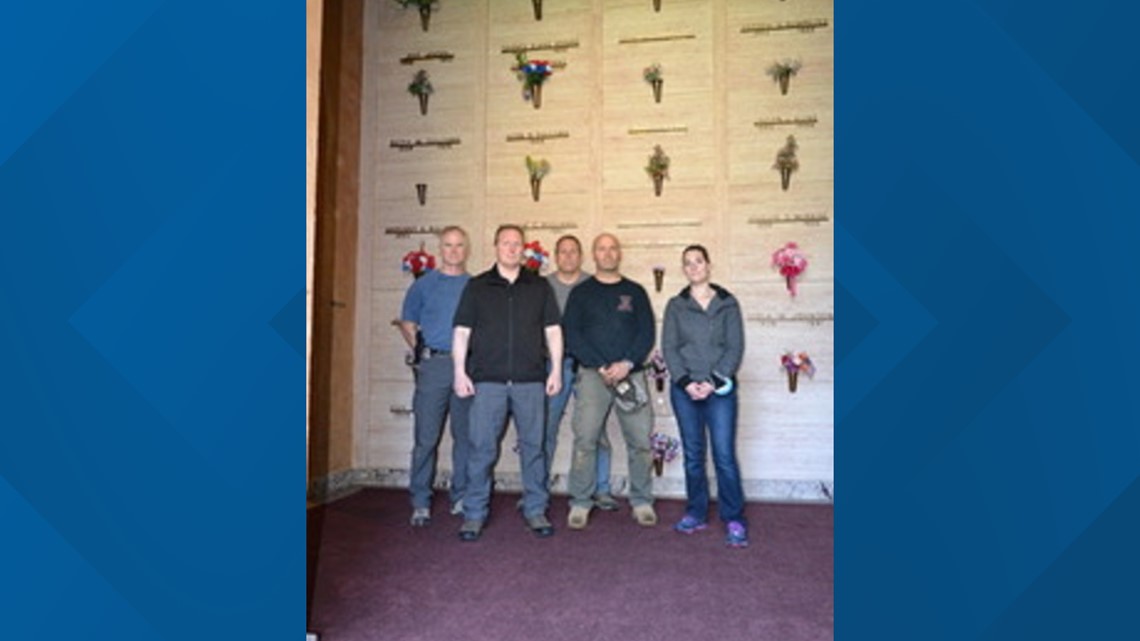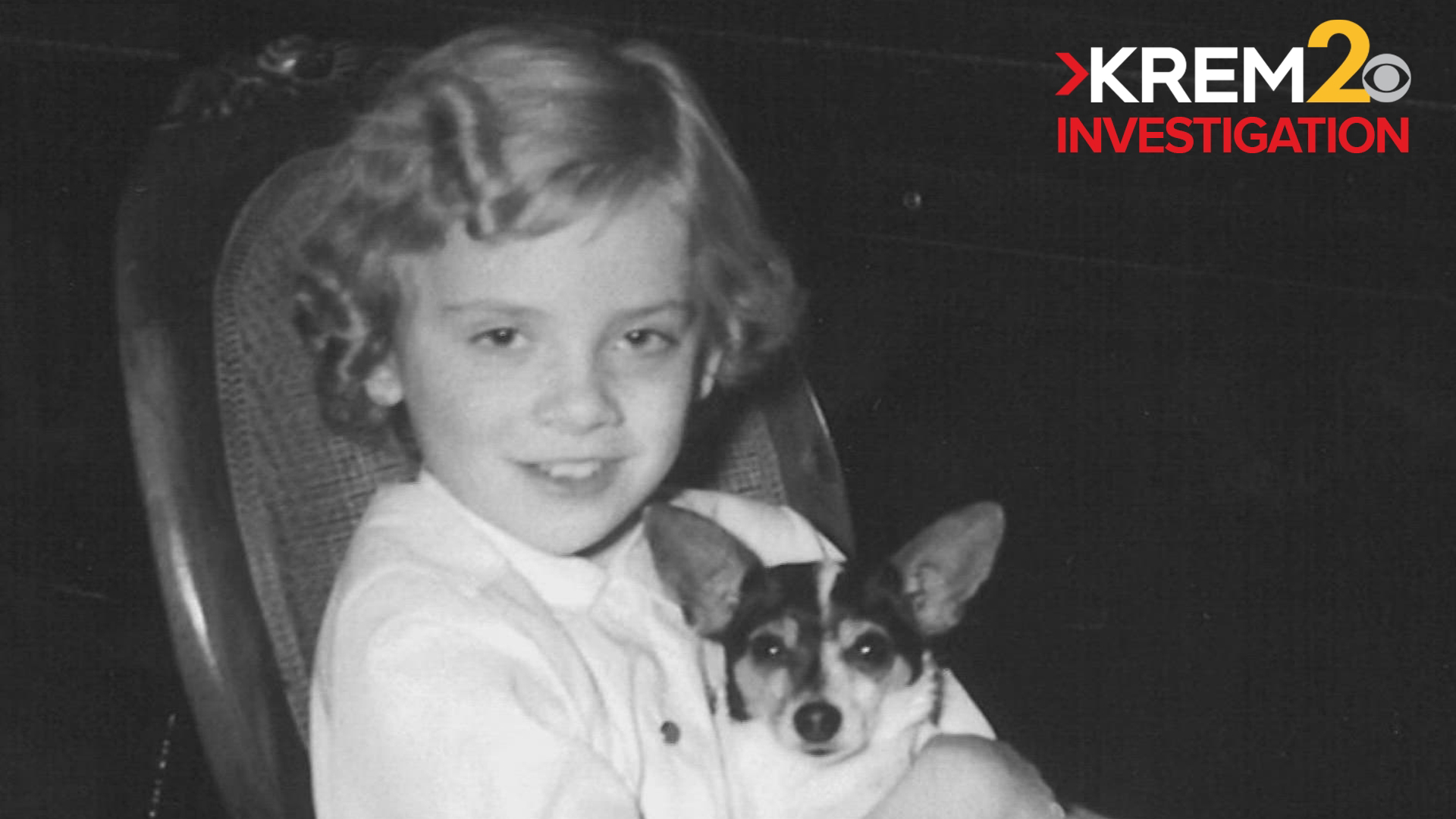SPOKANE, Wash. — March 22, 2022 marks 63 years since one of Spokane's most notorious crimes: The kidnapping and murder of 9-year-old Candy Rogers. It's a case that forever changed the Spokane Police Department.
Candy was a fourth grader at Holmes Elementary when she vanished in 1959 while out selling campfire mints in West Central Spokane. For 16 days, her disappearance gripped the entire city. Volunteers and police officers searched for her. Three Fairchild airmen died in a helicopter crash during the search efforts.
Candy's body was eventually found on March 22, 1959, beaten and raped, seven miles from her home. It launched one of the biggest and longest police investigations in Spokane history.
Joanne Poss is one of the only remaining relatives of Candy Rogers, who's still living, to remember her. She was only 13 years old when she learned her cousin Candy had been kidnapped and killed.
"And mom said, 'Oh, they found Candy's body.' She told me that she was dead. I thought, no, that doesn't happen," Poss recalled.
She said for 62 years her family carried that weight.
"We even sent an entire packet, probably a good inch thick, to America's Most Wanted, asking them if they would look into it," Poss explained. "Well, they sent the packet back with a very nice letter saying there wasn't enough to go on. And I never, ever thought it was going to be solved."
How detectives solved the case


In November 2021, everything changed. Sergeant Zac Storment is the Spokane Police officer who announced to the world that decades of police work had finally paid off, and that John Reigh Hoff (now deceased) was the man responsible for Candy's murder.
"Even before the science became available, we felt traditional investigation could find the way," Storment said. "Hoff's name was not anywhere, any records, no reports."
Spokane Police were confident they had their man, but they were surprised to find Hoff had never been suspected of the crime.
"We got extremely lucky in that we got DNA from 1959," Former Spokane Police Detectives Brian Hammond. "They had no concept of that at that time. And that's obviously what cracked the case. Otherwise, I don't believe it would have ever been solved."
Hammond worked on the case until he retired in 2021. He and Storment were two investigators in a long line of SPD officers never quite willing to give up on Candy's case.
"I didn't want to let it go," Hammond said. "As cold cases go, they're not really in the forefront. You just pick at them when you get a chance. "
"It's kind of a lonely endeavor," said Storment. "And he had to kind of shoulder that alone for a long time."
For more than 60 years, Spokane investigators kept chipping away, until they caught a break -- decades old DNA evidence, miraculously still intact in a mason jar.
"They did a lot of bagging in plastic, which can destroy biological evidence. Putting it in the jar, put it in a kind of an airtight container that didn't allow moisture to build," Storment explained. "You can't put a value on it. It's beyond belief that it's almost accidental. But the fact that the key evidence got put in a mason jar is incredible."
In early 2021, a forensic scientist at the WSP crime lab suggested sending the evidence in Candy's case to a private genome sequencing company in Texas.
With help from public records, like Ancestry, they built a DNA profile that led to three brothers in the Hoff family.
All three brothers were now dead, but they'd lived in Spokane at the time of Candy's murder.
SPD detectives tracked down John Hoff's adult daughter and asked for her permission to exhume her father's body. That's when investigators finally found their answer.
John Reigh Hoff was only 20 years old at the time of Candy's murder. He was 31 years old when he committed suicide at his home in Spokane.
Carrying on Candy's legacy through forensics
“It's not closure. But at least there's some form of satisfaction there knowing that the person that did it is at least named,” Poss said. “He may be in a grave, but he's named.”
While Poss is relieved to finally have answers, she knows it's something Candy's parents never got.
“They never saw him pay or die for it or whatever,” she said. “They went to their grave not knowing and that was hard. Very hard.”
She said the shadow of what happened to her family all those years ago is lifted now and is making way for the next generation of Candy's family and legacy.
Poss' granddaughter Emily Evers, now a freshman at Gonzaga University, is pursuing a career in forensics, to help solve future crimes like Candy's.
“It just felt like something I could really love doing, especially since it gives you something to do about all those people who don't get justice,” Evers said.
Both are now hoping when people hear the name Candy Rogers, they'll no longer think of a terrible unsolved murder, but rather an endless pursuit for justice and a family who waited lifetimes for the truth.
“Only God knows what she could have done if she had lived,” Poss said. “But because she can't, if you can carry on work in her name. That's something so good. She can't be forgotten.”

